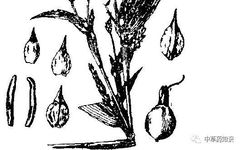Herb Name: Coix Seed (Yi Yi Ren)
Alias: Job’s Tears
Harvesting and Processing: In September to October, when the stems and leaves turn yellow and the fruits are brown, mostly mature (about 85% mature), the plants are cut down and left standing for 3-4 days before threshing. The stems and leaves are screened out, dried in the sun or roasted, and the husks and seed coats are removed using dehulling machinery to obtain the medicinal part: the seeds.
Origin: Nationwide
Family: Poaceae
Botanical Source: Coix lacryma-jobi
Plant Description: Annual or perennial herb.
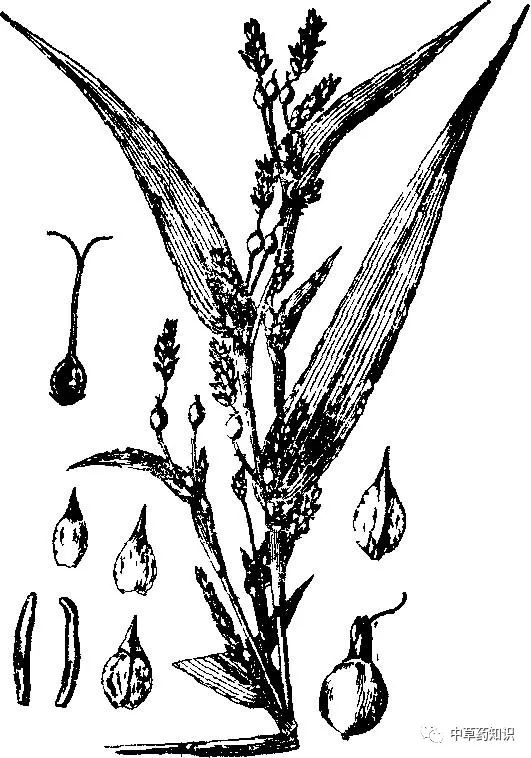
Height: 1-1.5m. The fibrous roots are relatively thick, with a diameter of up to 3mm. The stem is erect, with about 10 nodes.
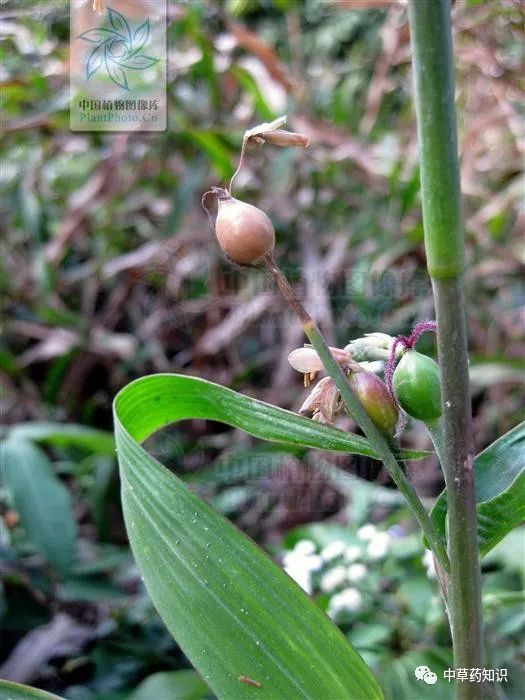
The leaves are linear-lanceolate, up to 30cm long and 1.5-3cm wide, with rough edges and a thick midrib that is prominent on the back; the leaf sheath is smooth, with the upper part shorter than the internodes; the leaf tongue is hard, about 1mm long.
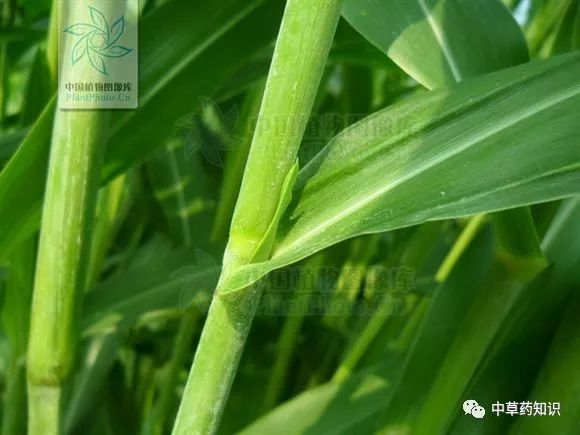
The inflorescence is racemose; the female spikelets are located at the lower part of the inflorescence, surrounded by a hard, bead-like glume, which is approximately equal in length to the spikelet; the fertile spikelet has a membranous lower glume and a thick, papery upper glume, with a blunt tip; the second glume is boat-shaped, enclosed within the first glume; the second outer glume is shorter than the first outer glume, and the inner glume is similar to the outer glume but smaller; there are 3 stamens, which are degenerated, and the pistil has a long style; the sterile spikelet degenerates into a tubular glume, with 2-3 male spikelets often occurring at the first node, the stalkless spikelet having a flat first glume, with both sides folded inward to form ridges with uneven wings, and the second glume is boat-shaped, with both inner and outer glumes being membranous; there are 3 stamens; the stalked spikelet is similar to the stalkless spikelet but is less developed or more degenerated.
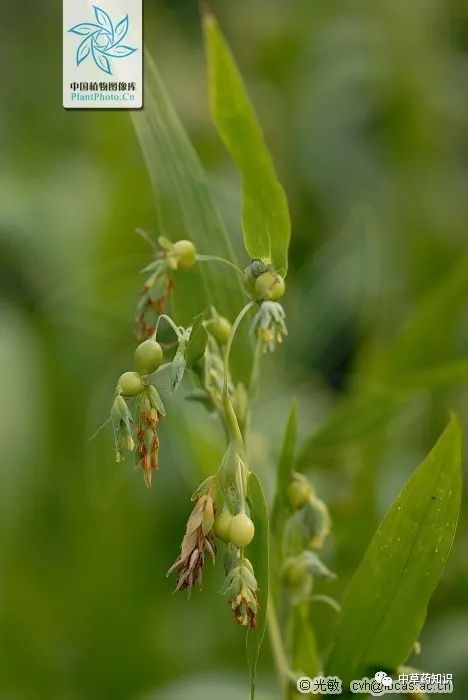
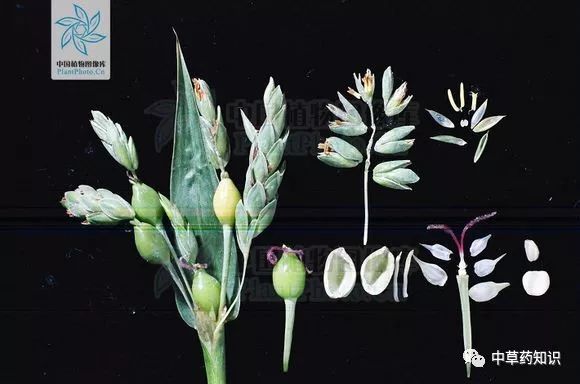
The caryopsis is enclosed in a hard glume, oval or ovoid. Flowering period: July to September; fruiting period: September to October.
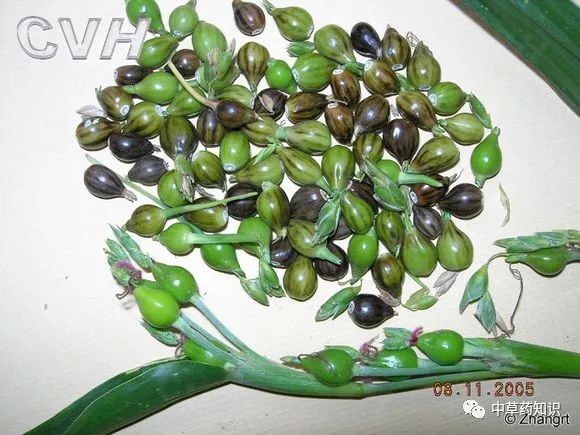
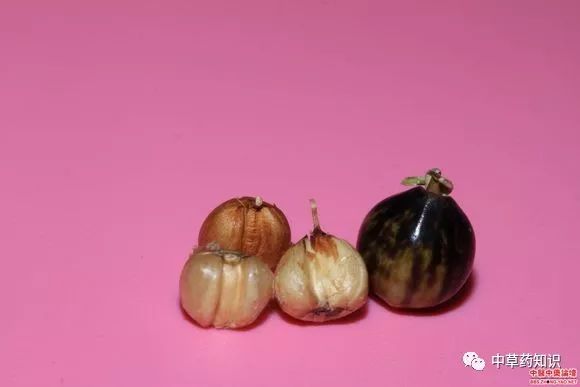
Coix Seed Characteristics: It is broad oval or elongated oval, 4-8mm long and 3-6mm wide. The surface is milky white and smooth, occasionally with remnants of yellowish-brown seed coats. One end is blunt and rounded, while the other end is wider and slightly concave, with a light brown dot-like hilum. The back is rounded and convex, and the ventral side has a wide and deep longitudinal groove. The texture is solid, with a white cross-section that is powdery. It has a faint aroma and a slightly sweet taste.
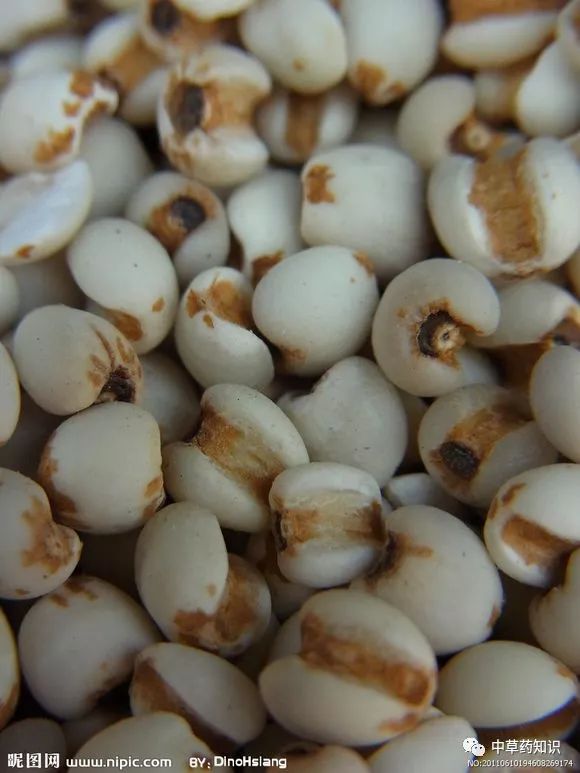
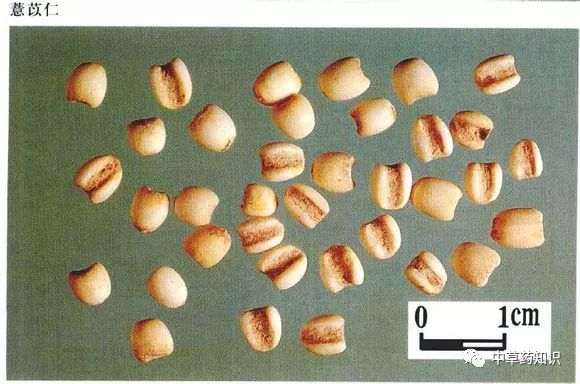
Choose those that are full, white, and intact.Coix Seed Properties:【Compendium of Materia Medica: Coix Seed is sweet and slightly cold. It is indicated for muscle spasms and contractions that cannot be flexed or extended, wind-damp bi syndrome, and to relieve qi stagnation. Long-term use benefits the body and boosts qi. It expels the three worms. It is also effective for treating edema.It is sweet in taste, aromatic in qi, and enters the Spleen (Pi) and Stomach (Wei) meridians. It dries dampness and clears heat, promotes urination and drains dampness, replenishes the essence of the earth, transforms the qi of the earth, moistens the dryness of metal, and facilitates the flow of water. It is particularly effective in expelling wind-dampness from the meridians and alleviating chest and diaphragm pain.Water is not beneficial if the qi is not clear; qi is not clear if the earth is not dry; the earth is not dry if the water is not beneficial. To dry the earth, one must promote water; to promote water, one must clear qi; to clear qi, one must dry the earth. The earth resides at the intersection of qi and water, holding the power of transformation and managing the clarity and turbidity. Coix Seed embodies all three benefits: it clears qi and promotes water from above, promotes water and dries the earth from below, and dries the earth and clears qi in the middle. The essence transforms into qi, and water transforms into qi; Coix Seed’s essence is thick and transforms qi most clearly; qi is clear and pure, transforming water most swiftly. With the clear and pure qi, it facilitates the descent and dispersal of water, allowing it to flow into streams and rivers, ensuring that the land remains fertile and the spirit of the land does not sink, dampness dissipates, and the air becomes refreshing, allowing vegetation to thrive.Ma Xing Yi Yi Gan Cao Decoction (formula in Ma Huang) is used to treat wind-damp diseases. In general, muscle spasms, bone pain, water retention, lung abscess, intestinal abscess, diabetes, and painful urination are all due to dampness, thus the efficacy of Coix Seed is undoubtedly significant.Among all diseases, dampness accounts for nineteen, all stemming from the deficiency of yang in the Spleen (Pi) earth. To drain dampness and dry the earth does not necessarily benefit qi and clear heat, while promoting water does not necessarily replenish the center. It can clear and dry, both tonifying and draining, possessing the power to suppress yin and support yang, and excels in removing turbidity and restoring clarity, which cannot be found in ordinary herbs.【Origin】 Produced in our country, particularly in Hebei, Shaanxi, and Annam, it is also widely cultivated elsewhere. The seeds are white, and those that feel sticky when bitten are good.【Properties and Taste】 Sweet, bland, slightly cold, non-toxic.【Indications】 Coix Seed is a key herb for eliminating dampness, promoting urination, tonifying the stomach, and nourishing the lungs. It is indicated for expelling evil qi from the muscles and bones, relieving bi syndrome, benefiting the gastrointestinal tract, reducing edema, dispelling wind-dampness, and treating athlete’s foot.【Additional Notes】 It expels evil qi from the muscles and bones, benefits the gastrointestinal tract, reduces edema, and promotes appetite.【Storage】 Cooked in rice or made into flour, it prevents hunger, warms the qi, and can be boiled into a drink to stop thirst and kill roundworms.
【Zhen Quan】 Treats lung atrophy, accumulation of pus and blood in the lungs, cough with phlegm and sputum, and is decocted to break down toxins and swelling.
【Meng Xian】 Effective for treating dry dampness and athlete’s foot.【Yao Zheng】 Indicated for treating edema.【Ling Tai】 Nourishes the stomach, relaxes the muscles, dispels dampness, and drains heat.
【Dosage】 Generally 9-18g.【Contraindications】 Not suitable for those with dry constipation, spasms due to cold, and pregnant women.Wang Ren An states that draining water benefits the earth, thus tonifying the spleen benefits the earth, which generates metal, thus tonifying the lungs clears heat, and supporting the earth suppresses the liver wood, thus treating wind-heat spasms. Zong Shi states that the Compendium mentions Coix Seed as the main herb for muscle spasms, but there are two types of spasms: those caused by heat, which cause contraction and shortening, and those caused by cold, which cause tightness. Therefore, Coix Seed can be used for spasms caused by heat, but not for those caused by cold. Both heat and cold can cause muscle spasms; if one only experiences heat without cold, it can also lead to muscle relaxation, while dampness can lead to prolonged weakness. This herb is very mild, and if used, it should be doubled to see effects. The classics also mention that pregnant women should avoid it, though the reason is unclear, and it may not be absolute. It is also recorded in the Daily Medical Records that it can treat warts, showing significant efficacy.It grows on the stem, transforming qi and descending, thus it can guide lung yang downward.【Preparation】 Remove the husk, wash with clean water, dry in the sun, and remove impurities.【Rong Chuan】 This herb grows in water, has a very mild taste, does not tonify or astringe, and specializes in promoting urination. All herbs that are mild in taste and thin in qi can descend and promote urination; it belongs to the yin of yang, not acting in the upper orifices but in the lower clear orifices, thus it can promote urination.【Appendix】 Coix root – indicated for the lower three jiao, can induce abortion, treat jaundice, and relieve abdominal fullness and pain in the chest and flanks.【Preparation】 Coix Seed: Remove impurities.Roasted Coix Seed: Take clean Coix Seed and roast until slightly yellow.【Properties and Taste】 Sweet, bland, cool.【Meridian Entry】 Enters the Spleen, Stomach, and Lung meridians.【Functions and Indications】 Strengthens the Spleen, promotes urination, relieves bi syndrome, and clears heat and drains pus. Used for edema, athlete’s foot, difficulty in urination, damp bi syndrome, muscle spasms, spleen deficiency diarrhea, lung abscess, intestinal abscess; flat warts.【Dosage】 9-30g.【Storage】 Store in a ventilated and dry place to prevent pests.【Notes】 (1) Coix root has similar functions to Coix Seed, clearing heat, promoting urination, and having anthelmintic effects, can treat intestinal parasites and abdominal pain.(2) For symptoms of damp-heat accumulation, it can be used with talc and talc; for damp-warm pathogenic factors in the qi level, with apricot kernel, cardamom, bamboo leaf, and mutong; this product also has the function of strengthening the spleen, used to treat spleen deficiency edema, athlete’s foot swelling and pain, combined with poria, white atractylodes, papaya, and evodia. For diarrhea and leukorrhea due to spleen deficiency with dampness, it can be combined with white atractylodes and poria. For bi syndrome caused by damp stagnation in the skin and muscles, it is often used in combination with cinnamon twig and atractylodes. For lung abscess and chest pain, it can be combined with fresh reed root, winter melon seeds, peach kernel, and houttuynia; for intestinal abscess, it can be combined with herba patriniae and aconite.

